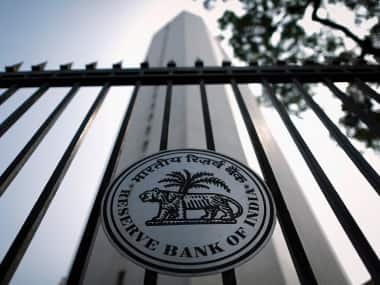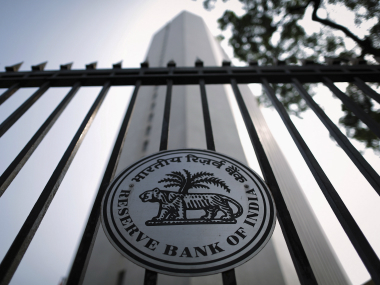Hopes of further rate cuts from the Reserve Bank of India (RBI) are sky high after indication from its Governor Raghuram Rajan early this month that the Indian central bank has turned the corner to the path of a lower interest rate regime in Asia’s third largest economy. The rate cut-associated euphoria escalated further when Arvind Subramanian, noted economist and the government’s chief economic advisor, said in Davos the RBI indeed may go for further rate cuts, corroborating Rajan’s statement. Theoretically, rate cut is good news for everyone in the economy. The very mention of it cools down the yields in bond markets, livens up industry spirits and takes some burden off the shoulders of the common man when banks subsequently go for reduction in their loan rates. Now, let’s take a look at the present scenario. [caption id=“attachment_2066003” align=“alignleft” width=“380”]  Reuters[/caption] Even before the RBI cut its repo rate — the rate at which it lends short-term funds to banks — to 7.75 percent, bond yields had come off their earlier highs. The rate cut made both the government and industry happy, as they hoped for a sustained lower interest rate regime. Thus the RBI’s move is significant to that effect. But when it comes to the common man, the quarter percentage point cut that has been affected and a likely further cut by similar quantum, don’t appear to make much difference as these are his interest cost burden in the form of lower home and auto loan EMIs (equated monthly installments) is unlikely to see a fall. There are two major reasons for this: For one, so far, monetary transmission in the banking system has been abysmal. That is due to the reluctance of banks to cut their actual lending rates to the end borrower. Though a host of banks have been reducing their deposit rates in the recent months, very few of them have cut their lending rates. Post the monetary policy, only two state-run banks — United Bank of India and Union Bank of India — lowered their base rates, or minimum lending rates, by a quarter percentage point to 10 percent. But that is the base rate of most of the large banks, including state bank of India, even at this stage. In that sense, both lenders have simply aligned their base rate with market, rather than reciprocating it to the rate signal from the central bank. Secondly, even if banks cut base rate by some margin, it wouldn’t help retail borrowers much, since banks typically play with the model they choose to compute the base rate and the premium charged above the base rate to certain category of customers to control their final lending rate, regardless of what their base rate is. Remember, the base rate system was introduced in 2010 replacing the benchmark prime lending rate (BPLR) system to bring in transparency in the lending process. Until then, banks used to offer sub-PLR rates to attract their favorite corporate clients, some times as low as 6 percent to 7 percent, while they used to charge small companies and individuals much higher than PLR. This disparity has been tackled with base rate coming in since banks cannot lend below the base rate to any customer, except the economically weaker sections, who are a minority for banks. But banks still found a way to play with the spread over the base rate to offer competitive (lower) rates to their premium corporate customers, by adjusting the premium over the base rate. This way, it is up to the bank to decide whether the final rate should be charged 300 basis points (bps) plus the base rate or 50 bps. One bps is one hundredth of a percentage point. So, in short, banks are free to manoeuvre the spread over the base rate to charge the retail borrower a higher rate. In fact, the RBI is trying to tackle this. The recent clarifications on base rate, which said banks need to have a board approved policy to decide the premium and the loan rates should be displayed on the website etc, are aimed at bringing about a much-needed transparency in loan pricing. But still banks continue to enjoy the flexibility to decide how to calculate their base rate. One of the main components of the base rate is the deposit rates the bank chooses to link the base rate to. Banks can do this either linking the base rate to one particular maturity deposit, say the shorter or longer end of the liabilities, or the average cost of deposits. At present, there is no uniform system among banks on this mechanism. Different banks use different methodologies to arrive at the most ‘appropriate’ base rate. Also, some banks have indicated that the fresh clarification from the RBI on the tenor premium (that banks need to apply the same tenor premium for all category of borrowers) might, in fact, result in an increase in the loan rate. Hence, no major changes are likely in the current base rate levels even with the modified guidelines. In effect, the base rate system hasn’t helped much to bring in transparency or effective monetary transmission as far as the common man is concerned, even though, it has indeed killed the practice of sup-PLR loans. Whether the RBI cut rate or not, banks have been highly rigid to take cues from the central bank and pass it on to the retail customer. Thirdly, for the corporate customer too, except the top rated companies, getting loans with lower rates will be a bit difficult at least in the immediate future, since banks are in no mood to increase their exposure to weak companies given the substantial amount of stressed assets on their balance sheets — a result of the reckless lending they resorted to in order to garner more business and the ill-effects of economic slowdown. Hence, any major reduction in corporate loan rates too looks difficult. To be sure, the RBI has indeed tried to prod banks to ensure better monetary transmission and transparency by reemphasising that banks need to review their base rates quarterly and have more consistency in deciding the premium charged to multiple categories of borrowers. If the RBI continues with its rate easing plan and cut repo rate by a much larger quantum, say 50-75 bps more, banks might consider lowering their base rates to some extent. But, that may come after further rounds of reduction in deposit rates. In a scenario, where falling inflation has net returns on bank deposits positive for savers, banks do not fear generation of funds. But an identical cut in lending rates compared to the reduction in deposit rates appears unlikely. In short, it is debatable at this point that how much say RBI rate actions can claim on influencing the actual interest burden of the common man. The base rate system, for sure, hasn’t changed things for the better for the retail customers compared with the BPLR regime. Until the time banks choose to cut their lending rates in a meaningful manner for the retail customer, the RBI rate cut doesn’t have much sense for the common man who is worried about his monthly interest outgo. There, the RBI has very little control as it appears now.
Until the time banks choose to cut their lending rates in a meaningful manner for the retail customer, the RBI rate cut doesn’t have much sense for the common man
Advertisement
End of Article


)

)
)
)
)
)
)
)
)



